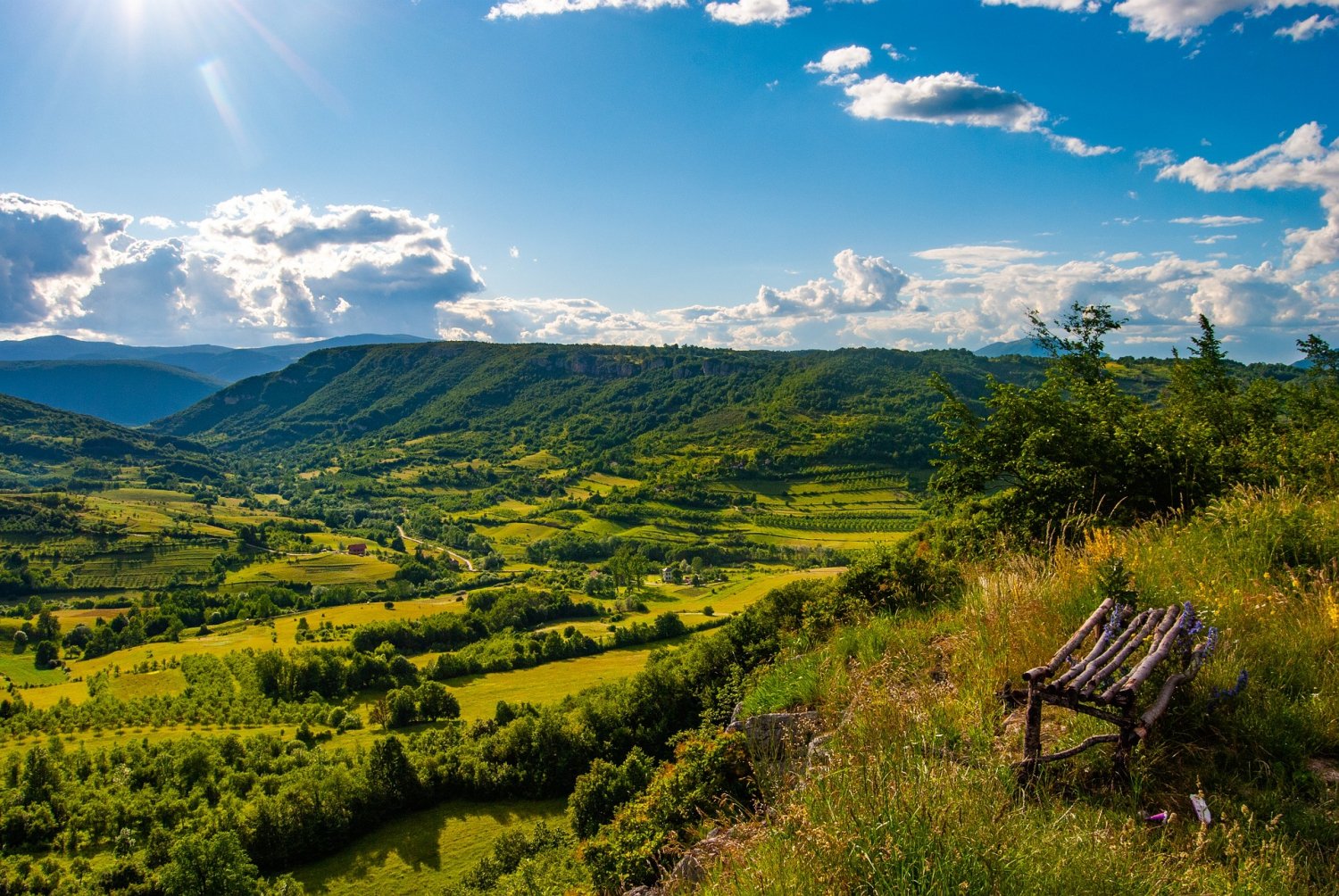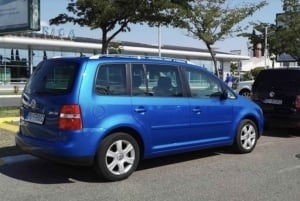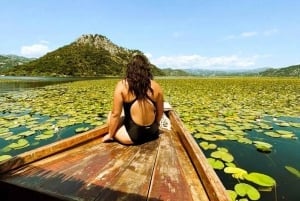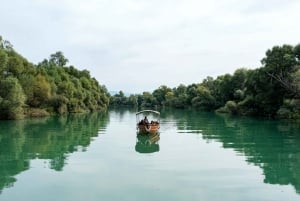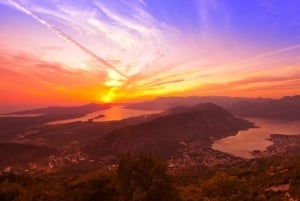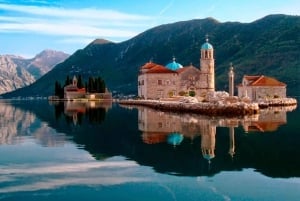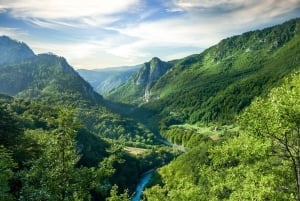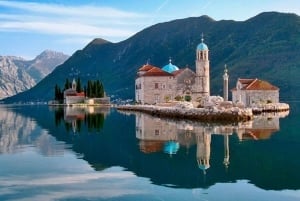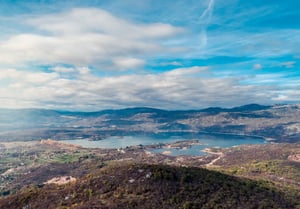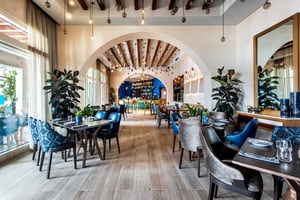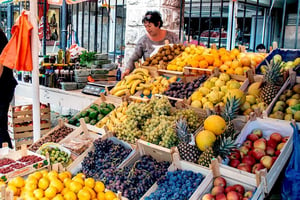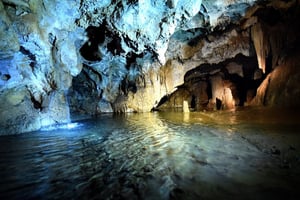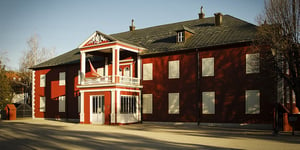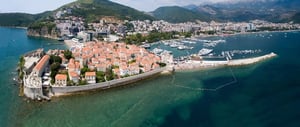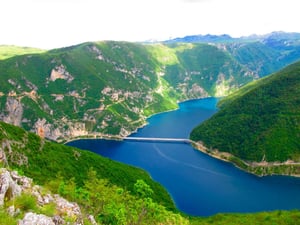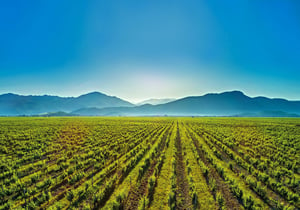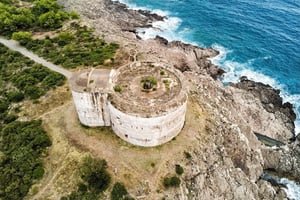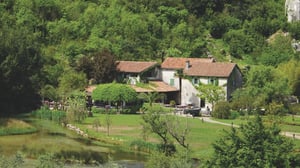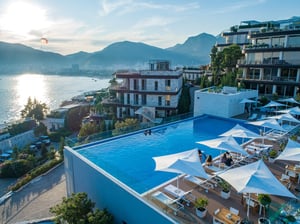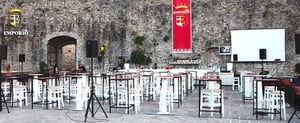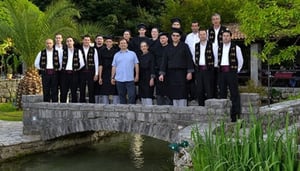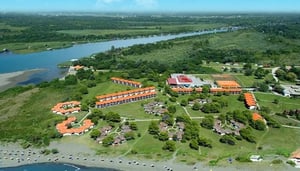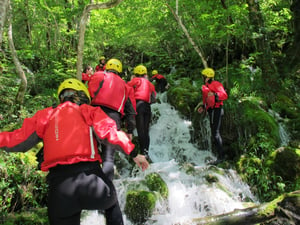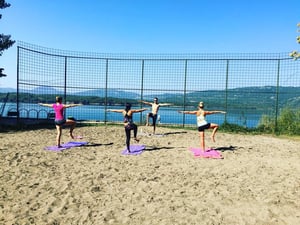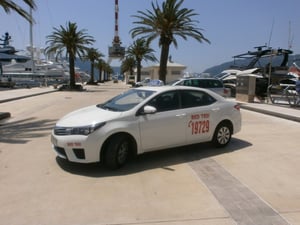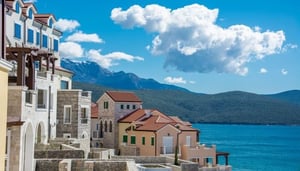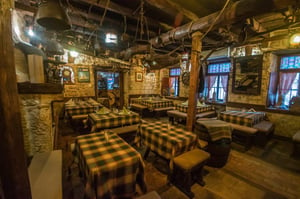Travelling to Beautiful Balkans
With the focus on ex-Yu and Greece
Book Top Experiences and Tours in Montenegro:
If youʻre booking your trip to Montenegro last minute, we have you covered. Below are some of the top tours and experiences!- From Dubrovnik: Montenegro Day Trip
- From Kotor: Transfer to Podgorica Airport or City
- Skadar Lake National Park: Guided Boat Tour with Wooden Boat
- Skadar Lake Guided Tour to Vranjina Monastery & Wine Tasting
- From Podgorica: Kotor & Budva Old Towns Tour and Skadar Lake
The Balkans are located in Eastern Europe, and it comprises of 10 countries: 6 countries of former Yugoslavia - Slovenia, Croatia, Montenegro, Serbia, Bosnia and Herzegovina, and North Macedonia; plus Albania, Bulgaria, Romania, and Greece. Some maps also include Turkey, since geographically, a small part belongs to this region. Compared to other European regions, especially Western Europe, Balkans are one of the cheapest places to travel in all of Europe. One of the advantages is the good road connection and easy transport, so you can get to any Balkan country by car, bus or hitchhiking; and from here in an equally easy way, get to any European country.
Here is how we see the Balkan countries:
1. Slovenia â The Green Paradise
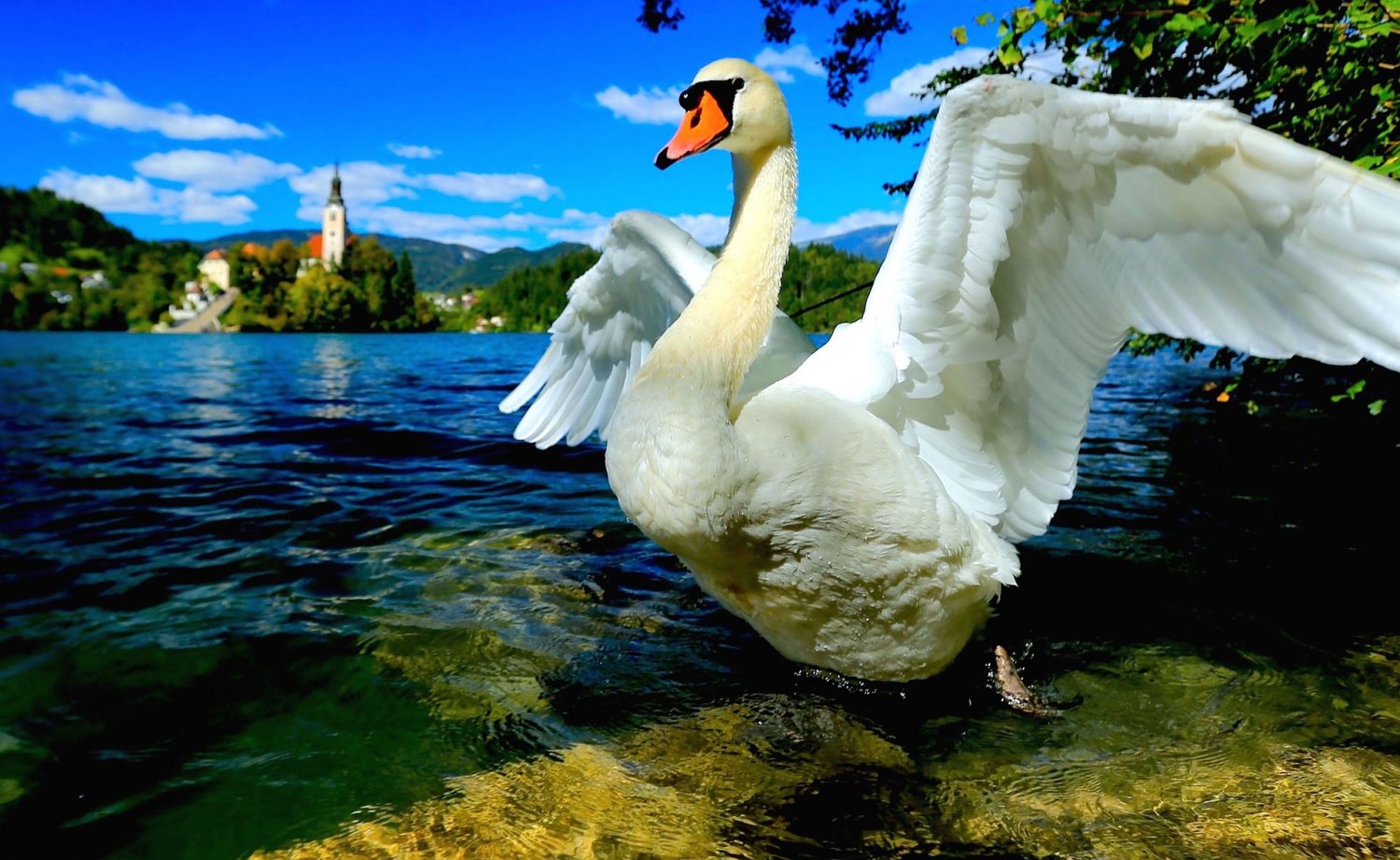 Lake Bled, Slovenia
Lake Bled, Slovenia
Explore the greenest country in the Balkans, and one of the most green-aware countries in Europe â Slovenia. Located in central Europe, and bordered by the Adriatic Sea, Italy, Austria, Hungary and Croatia, Slovenia was one of the first former Yugoslavian countries to hold a referendum for independence in 1991. Slovenia, now a successful EU and NATO member state, is one of the favourite tourist locations for many Europeans. It stands out for many qualities, including its care and dedication to the greenway of life.
According to the NimbleFins analysis of the greenest EU countries in 2020, Slovenia is ranked 8th, as Slovenians proudly assert their love for their green country. Slovenia offers a total of 48 destinations, 43 providers, 4 natural parks, 2 agencies and 1 attraction, which complies with the green strategy of the Slovenia Green Label. The Green Scheme of Slovenian Tourism (GSST) is a tool developed at the national level that is directed towards the sustainable development of tourism in Slovenia and promotes green endeavours through this label. As mentioned, there are 48 green destinations you can visit in Slovenia, and the first on this list is the capital city Ljubljana, which was proclaimed the European Green Capital in 2016. The best green adventures to be done in this city are a cycling tour of Ljubljana; the taste of Ljubljana food Tour and the Ljubljana Beer Tour and Stand-up paddling on the River Ljubljanica.
Another unavoidable place is Idrija, which is a famous âsilver streamâ which rises above the oldest mining town in Slovenia, once the second-largest mercury mine in the world. This interesting tourist experience is now the land protected by the UNESCO heritage site. Some of the other places you ought to visit in this country of unspoiled green nature are the Cerkljansko Hills, the medieval town of Kamnik, The Radlje ob Dravi Water Park, Rogla Plateau and the town of ZreÄe, city of Celje, etc.
2. Montenegro â The Wild Beauty
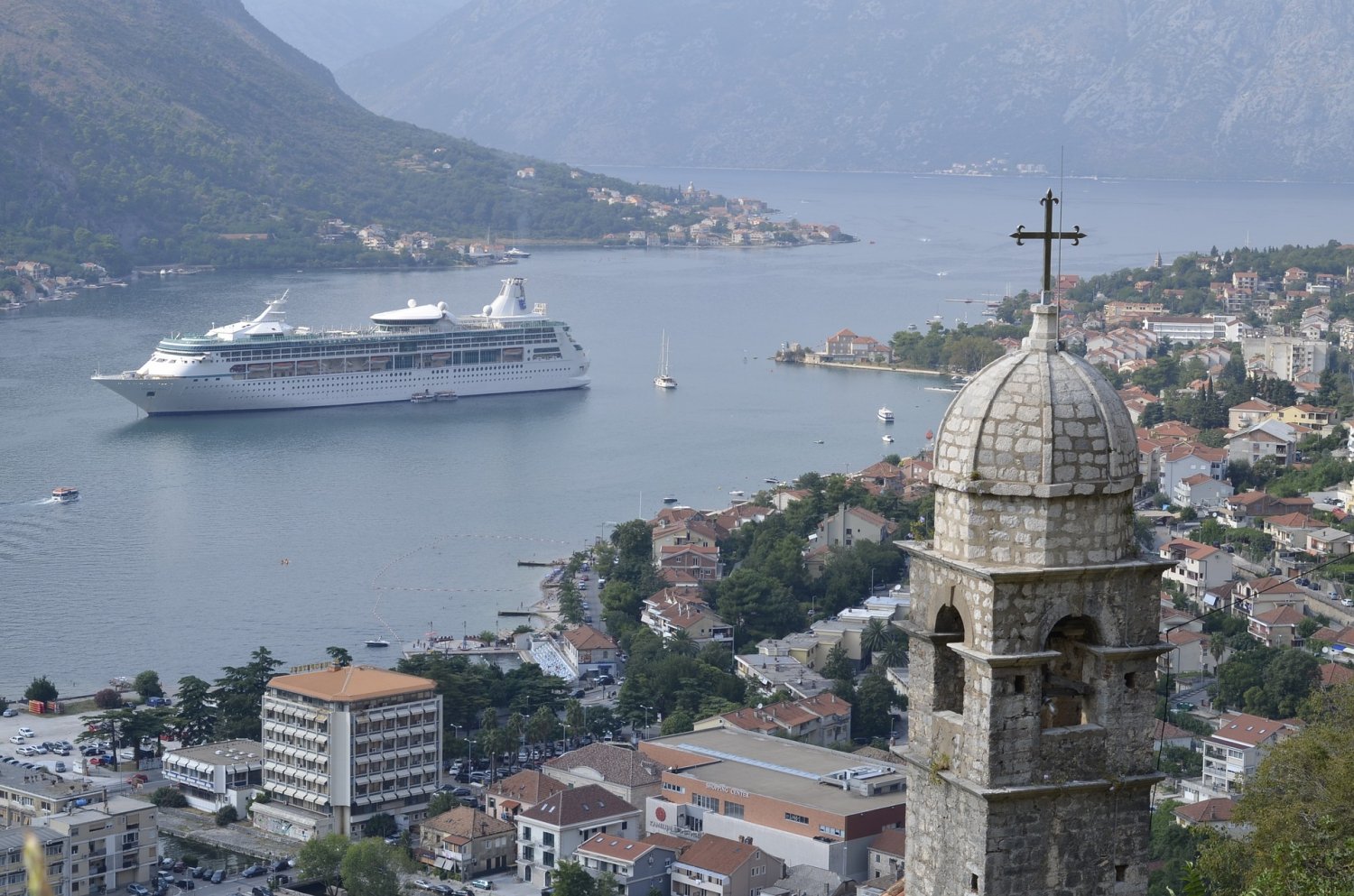 Kotor, Montenegro
Kotor, Montenegro
is formally the youngest of the Balkan countries, which regained its independence in 2006. Despite its small geographical area and population of a little over half a million, this is a country of many hidden beauties. Montenegro was the first country in the world officially declared an ecological state in 1992, thus becoming the first country writing about environmental protection in its Constitution. Surrounded by the bordering countries of Serbia, Bosnia and Herzegovina, Croatia and Albania, Montenegro is the proud owner of 300 km of Adriatic coastline, ornamented by historic towns, sandy and pebble beaches, and blue waves of the sea. As the name Montenegro or Black Mountain implicates itself, this is a place where many undiscovered beauties are waiting for their conquerors. Within its borders, Montenegro has five national parks (NP Biogradska Gora, NP LovÄen, NP Skadar Lake, NP Durmitor, NP Prokletije), it abounds in mountain massifs and high peaks (60% of the mountain peaks are higher than 1000 metres above sea level), numerous lakes and rivers, and contains many other protected natural and historical monuments.
3. Croatia â Wild Mediterranean Islands and Beaches
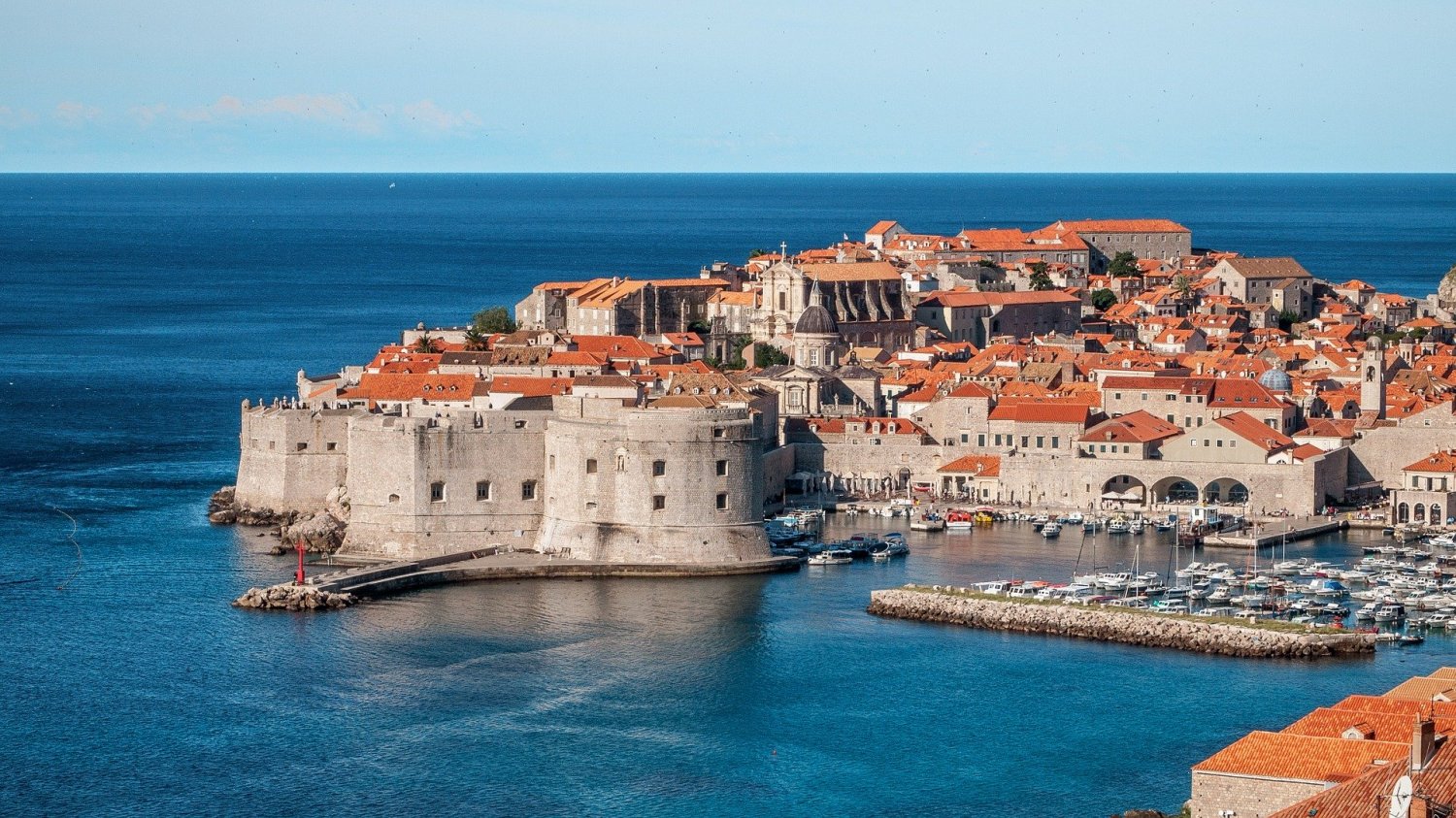 Dubrovnik, Croatia
Dubrovnik, Croatia
The unavoidable country to visit in the Balkans is Croatia. Croatia is a geographically diverse country in the north-west part of the Balkans. With a population of around 4 million and its crescent-shaped form, Croatia is a typical Mediterranean country. For many years it has been on the list of the top 20 European destinations, and thanks to the famous Christmas market in Zagreb, Advent, Croatia has become travellersâ favourite destination all over the world.
Croatia is also one of the European countries with the most European award-winning destinations for sustainable and environmentally friendly tourism, taking the 7th place amongst European greenest countries of 2020. But what Croatia is widely known for is its Adriatic coast, which offers a large choice of unique activities. The Adriatic is generally known for its rocky, pebble and sandy beaches and numerous islands, bays, and reefs. Through 6278 km of Croatiaâs coastline, you will encounter an exciting challenge of 1244 islands and islets, where you can explore âan-endless-blue of possibilitiesâ.
The majority of Croatian beaches have a blue-flag status, which guarantees water quality, safety, and services. The beaches range from family-friendly to nudist. Whether you like city beaches such as the Banje Beach which is only a few minutesâ walk distance from the historical city of Dubrovnik, or you prefer a little bit more remote places like the beaches on the KorÄula island, Croatia has what youâre looking for. Other famous beaches included in the offer are the Sakarun Beach, known for its sand whiteness and sea cleanliness; The Queenâs Beach which is the longest sandy beach in Croatia, beaches on Kornati Island, which remain a paradise for divers, etc. Besides its unspoiled nature, beautiful coast and beaches, this country is also known for the rich cultural heritage, with many locations protected by the UNESCO.
4. Serbia â the Soul Food Country
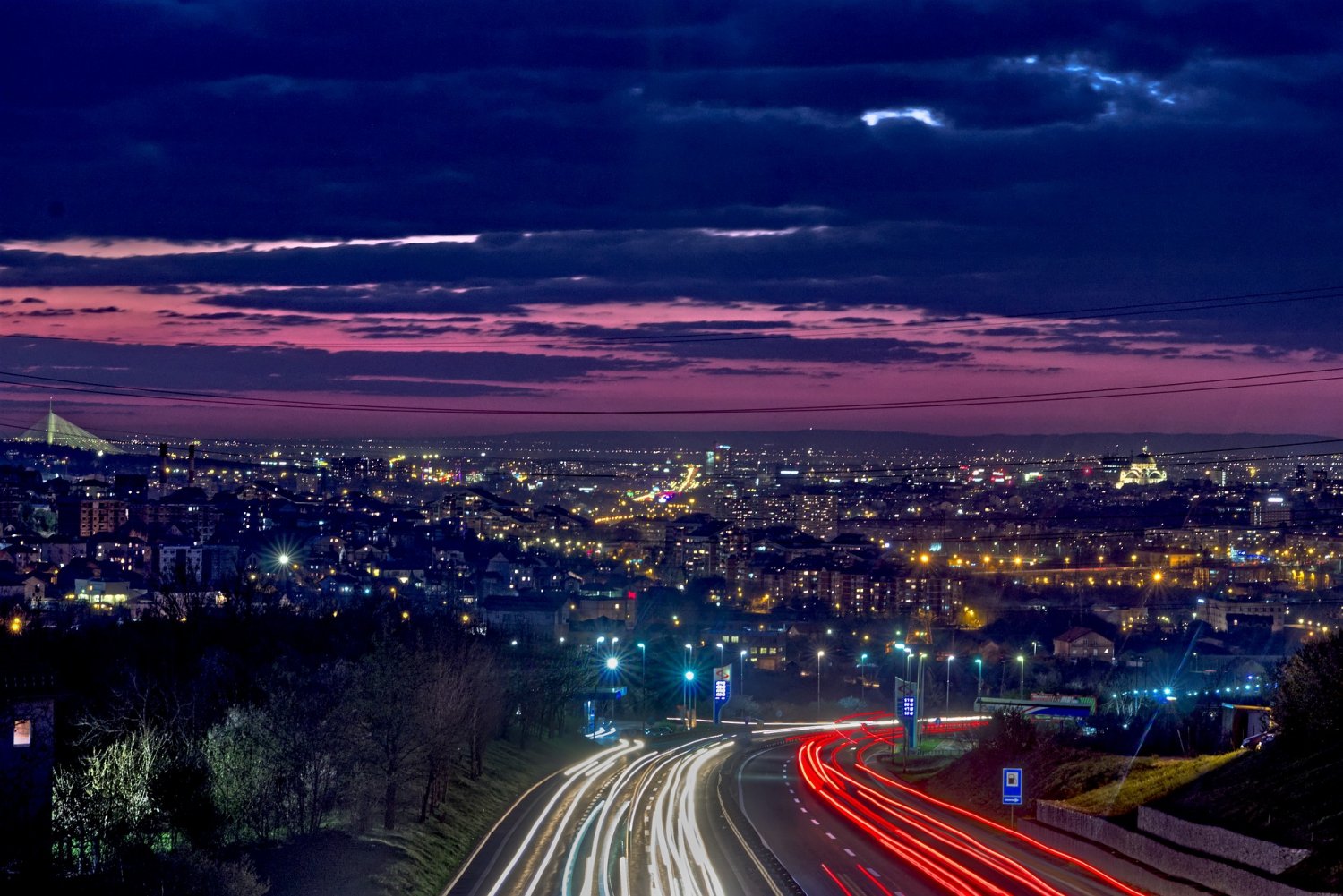 Belgrade, Serbia
Belgrade, Serbia
Come to Serbia, the biggest amongst the former Yugoslavian countries (population of 8 million), as Serbiaâs capital Belgrade used to be the capital of Yugoslavia. Up to 2006 referendum, Serbia together with Montenegro kept carrying the legacy of the former republic of Yugoslavia, co-existing as the unity under the name Serbia and Montenegro. Nowadays, Serbia is on its path to becoming one of the countries where travellers come to enjoy its urban lifestyle. Belgrade, famously known as the European metropolis justifies that epithet with the legendary nightlife. The unforgettable party also awaits you at the annual Exit Festival in Novi Sad or one of the most ârowdyâ trumpet festivals in Guca. Sure, this is only one part of the offer.
Many tourists that have visited Serbia claim that this is a country where "good food" is eaten and Serbians are known as true gourmets. Created under the influence of the surrounding Balkan and European nations, Serbian cuisine is very rich and diverse as you can try dishes such as Hungarian goulash, German strudel, or Turkish baklava. But still, in Serbia, there are many authentic dishes, made only there. Serbians enjoy preparing and consuming food, often making traditional specialities based on old family recipes that are passed down from generation to generation. A plentiful Serbian lunch cannot be imagined without a delicious appetiser, followed by a soup, as well as the main course of vegetables and meat, finished with a tasteful dessert. The combination of fresh ingredients, traditional methods of production, and hot spices result in numerous delicacies of which the most famous are: ajvar, kajmak, different types of cheese, sarma, podvarak, LeskovaÄka muÄkalica, proja, gibanica etc. To explore everything that Serbia has to offer you, you must visit the rural households where you can experience the authentic ambience of a genuine Serbian village where people âstill live in harmony with nature and following traditionâ.
5. Bosnia and Herzegovina â the Country of Multi-culturalism
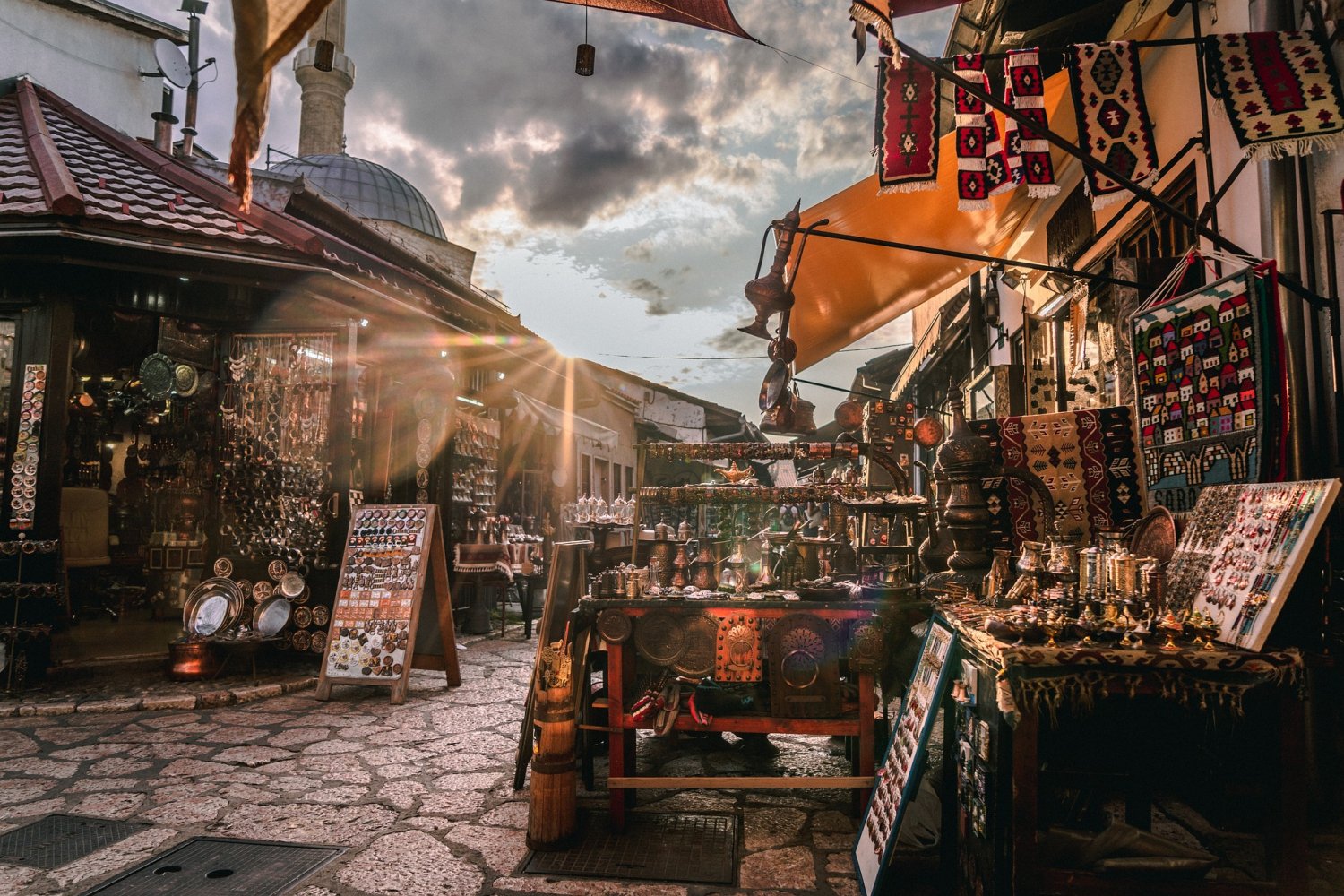 Sarajevo, Bosnia & Herzegovina
Sarajevo, Bosnia & Herzegovina
Donât skip Bosnia and Herzegovina, which like other neighbouring Balkan countries, is a country rich in culture, history and most importantly has extraordinary landscapes. Bosnia and Herzegovina, or BiH shortly, is located in south-eastern Europe, in the centre of the Balkans, and it shares borders with Croatia, Serbia and Montenegro. It opens onto the Adriatic Sea, through the 20 kilometres long coast in the town of Neum. It is a country which consists of 2 entities, Federation of Bosnia and Herzegovina and Republika Srpska, and it is inhabited by 3 nationalities Bosnians, Serbs, and Croats. This state system of BiH was created by the signing of the Dayton Agreement in 1995, which ended the war and BiH was declared an independent state.
BiH is adorned with its stunning beauty with an endless array of natural landscapes. It is also recognised for its culture, tradition, but also its extremely hospitable population. Bosnia and Herzegovina have always been a crossroads of many civilisations and cultures, and that is exactly what it is best known for today. In 2010, its capital Sarajevo was nominated as one of the ten best cities to visit that year, by Lonely Planet.
Sarajevo is the place where you can see some of the biggest and oldest sights of this country, such as Gazi-Husrev Beyâs Mosque, that was built in 1531, or Ali-Pashaâs Mosque dating back from the 1560s. In the centre of the city at the BaÅ¡ÄarÅ¡ija Square, there is a Sebilj, which has become its trademark, and its original form dates back to 1754. Also located near the aforementioned Square, there is the Old Orthodox Church, that was built in 1539, which is one of the oldest and most valuable cultural and historical monuments of Sarajevo. Orthodox believers from other cities come here to pray and perform other religious rituals.
Another interesting religious place to visit is MeÄugorje, a small village on the border with Croatia, which is known worldwide for its annual Christian pilgrimage. The place became known as a sanctuary due to the appearance of the Mother of God. This phenomenon is not yet recognised by the church, but millions of believers go to visit this place in the hope of help, support and healing.
6. North Macedonia â The Country of Eternal City and Wines
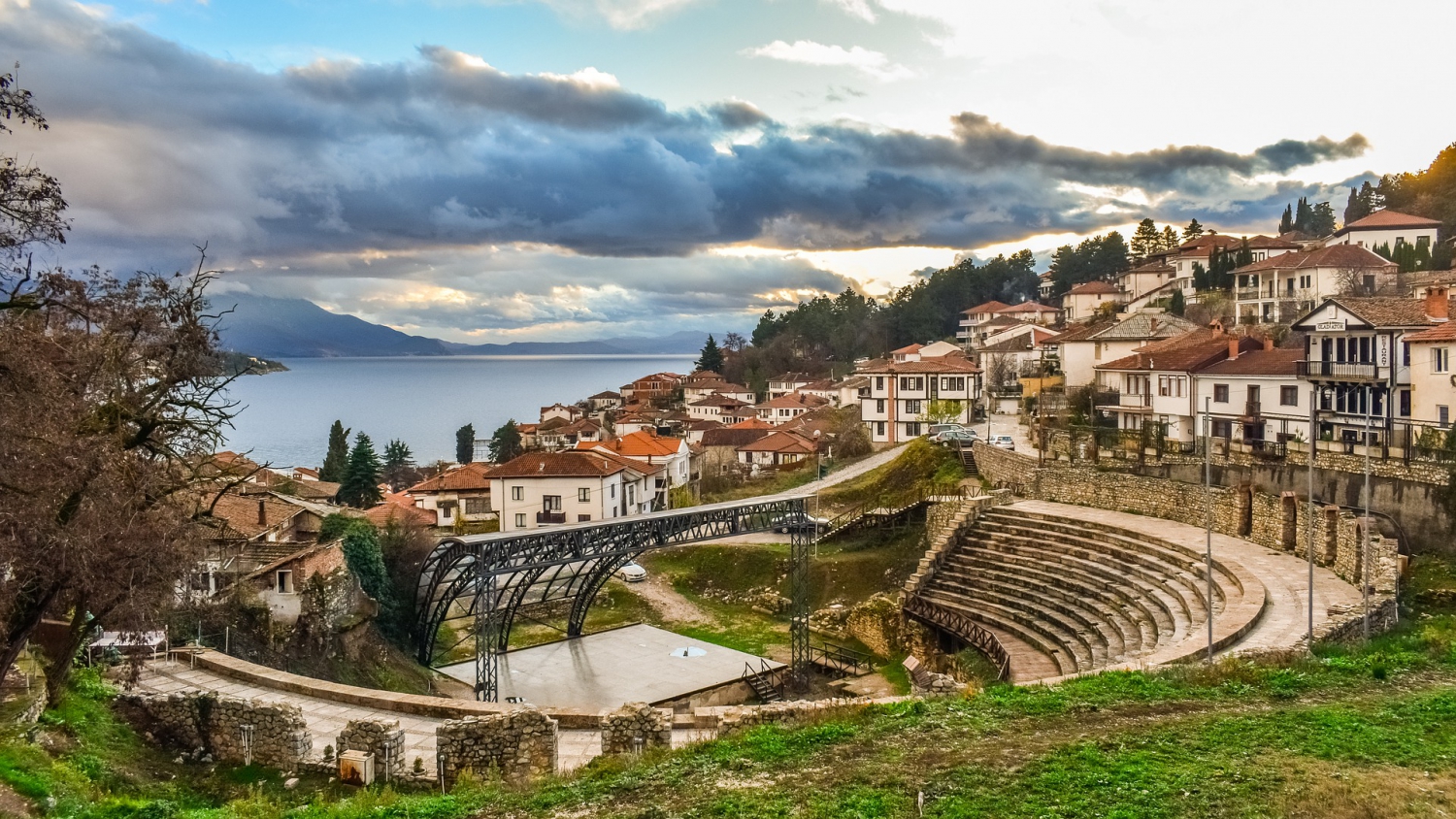 Ohrid, Macedonia
Ohrid, Macedonia
Macedonia is one of the former Yugoslav countries that has recently attracted a lot of attention due to the name dispute with Greece when in 2019 an agreement was finally reached to name the country Northern Macedonia. North Macedonia is the central country of the Balkans, and it is one of the relatively unknown gems of the former Yugoslavia, a country of outstanding historical, cultural and geographical heritage.
The capital city is Skoplje, which is a typical European capital according to the visitors. What characterises this city is the powerful architecture that includes a large number of monuments in the main square, most of which is dedicated to Alexander the Great, the famous Macedonian general and conqueror. North Macedonia is also known for its gastronomic offer, of which Macedonian wine is widely known. Some of the indigenous species that you must try while you are in this country are Vranac, Prokupac, Kadarka, Žilavka, and Župljanka. Macedonian wineries open their doors wide to all fasters who want to learn more about the history of wine regions, about the process of wine production.
In the southwestern part of Macedonia, on the Ohrid lake lies the "eternal city" of Ohrid. This city is said to be "the cultural history of Macedonia in miniature", and due to a large number of churches and monasteries (as many as 365 churches and monasteries), it is also known as European Jerusalem. This city is also under UNESCO protection. What will delight you during your stay here is the untouched nature because Macedonia has 3 national parks, 10 special nature reserves, 2 regions of unique natural beauty, and more.
7. Greece â Antique Mystique
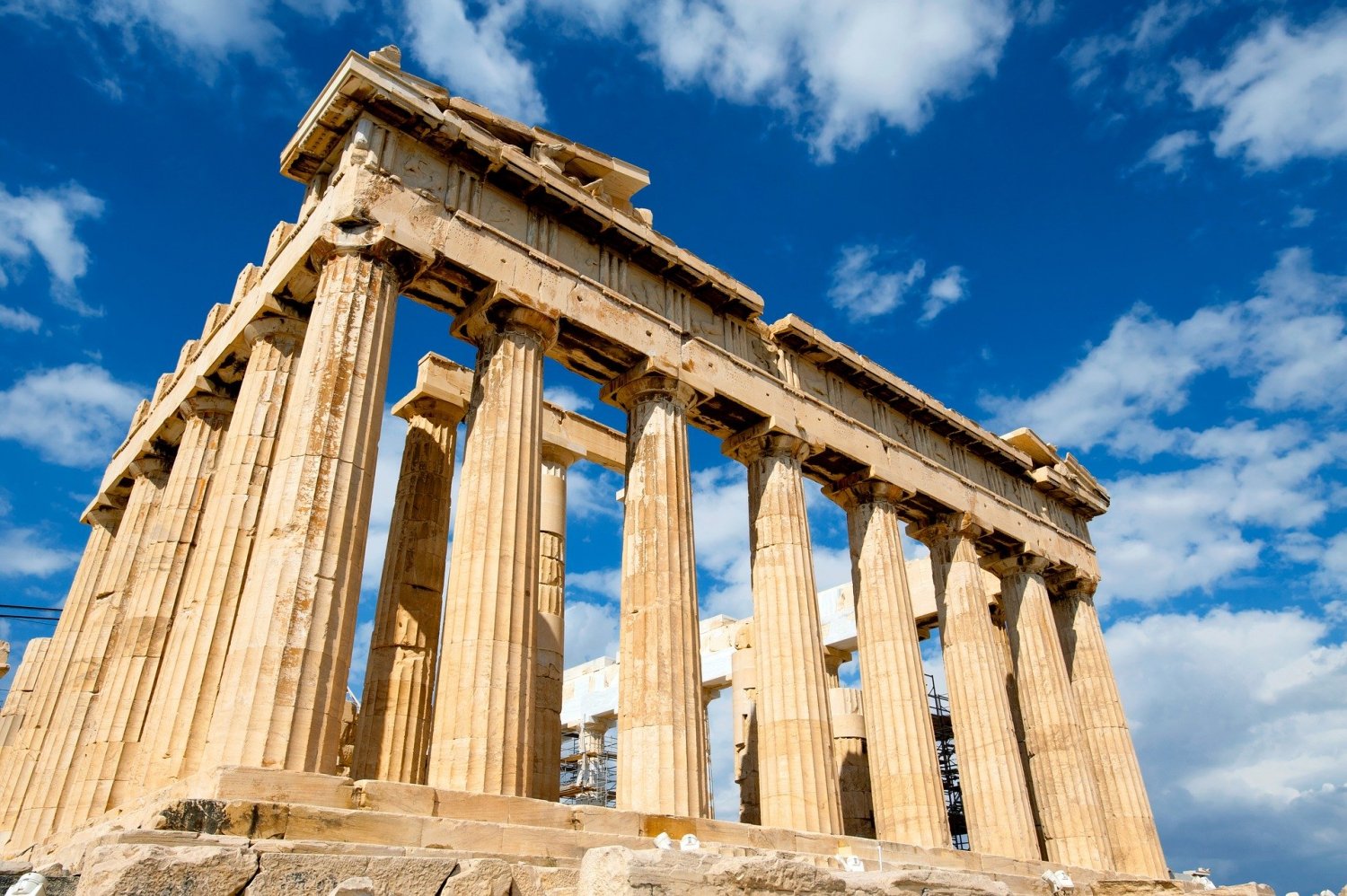 Parthenon, Greece
Parthenon, Greece
If you haven't been to Greece before, now is the time. Located in the southeast of Europe, in the south of the Balkan Peninsula lies Greece, a country that is considered the "cradle" of modern European civilisation. Greece is the crossroad of history, cultures and many civilisations where you will experience indescribable beauty. This is the biggest country in the Balkan Peninsula (population of approximately 10 million) which carries the legacy of Antique Greece. With over 200 Greek islands, thousand-years-old historic sites, beautiful beaches, towering mountains, Greece is one of the most popular holiday destinations; in 2019, it was the 8th most visited European country. There are as many as 17 sites throughout Greece on the UNESCO World Heritage List and a variety of other attractions worth your visit.
Athens, which is the capital and at the same time the biggest city is the location of many historical sites such as the Acropolis, which contains the remains of the ancient buildings of extreme architectural and historic significance such as the Erechtheion Temple, the Propylaia entrance and the Temple of Athena Nike. The archaeological site of Delphi which is nowadays considered to be one of the most stunning archaeological sites in the world was known as the prime place of worship for Apollo, the Greek god of the sun, as well as a place of worship for many other gods and goddesses. Other locations which you must not miss when visiting Greece are the archaeological site of Sparta, the Athenian Agora, the ancient city of Aigai, the ancient city of Mycenae, Olympia, the ancient city of Corinth, the Peloponnese, etc.
***
And what is your impression of these countries? Weâd be happy to hear your feedback and experiences, write us here!


